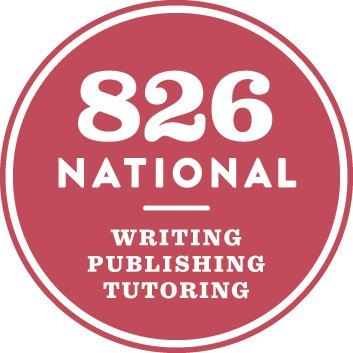 The following lesson plan was written by Daphne Gottlieb for Don't Forget to Write: for the Secondary Grades (Jossey-Bass, 2011), a collection of lesson plans compiled by 826 National, a network of nonprofit organizations dedicated to helping students, ages six through eighteen, with expository and creative writing, and to helping teachers inspire their students to write. This lesson plan is intended for one session of sixty minutes (or more).
The following lesson plan was written by Daphne Gottlieb for Don't Forget to Write: for the Secondary Grades (Jossey-Bass, 2011), a collection of lesson plans compiled by 826 National, a network of nonprofit organizations dedicated to helping students, ages six through eighteen, with expository and creative writing, and to helping teachers inspire their students to write. This lesson plan is intended for one session of sixty minutes (or more).
Sometimes it’s hard to love poetry. Some of it is really stuffy, some of it is really abstract and hard to follow, and some of it is so quaint it’s cringeworthy. But there’s one form that never lets us down—it’s precise, it’s snappy, and it sounds as contemporary as anything even as it’s a traditional form thousands of years old.
That’s right, we’re talking about haiku. Haiku, with its traditional Japanese form: the first line has 5 syllables, the second has 7, and the third has 5, for a total of 17 syllables. Before you know it, you’re done with one and on to the next.
You can drop all sorts of language from the world around you into haiku form, from the instructions on microwavable food to classified ads from the newspaper to the most important: your own life. Students are often somewhat turned off from writing poetry because it’s effeminate or stodgy or snooty. But by bringing in everything from song lyrics to shampoo instructions (lather, rinse, repeat / lather, rinse, repeat, lather / rinse, repeat, lather), the mundane takes on the sublime. And can be ridiculously funny. We have been surprised time and again teaching workshops—by high school weightlifters writing about pushing it to the point of failure in the gym; by after-school cooks giving us recipes on how to make the whole world better; by all the writers telling us about what’s outside the window, in their day. That’s the point of poetry at its best. That’s why we love it.
Ready to get your haiku on in your own classroom? The exercise has four haiku variations for your students to try: group haiku; speed haiku; an un-haiku haiku; and a haiku battle. Enjoy.
Given the short form of haiku, it’s possible to take 10 to 15 minutes and have a bounty of poems result. The key to writing, sometimes, is finding permission to speak—song lyrics and shampoo bottles sort of grant that these haiku are everywhere and hey! anything anyone writes will be better than those! What do you see every day that people need to know about?
1. The Tanka
Honoring the old tradition of tanka (see “A Brief History of Haiku,” below), each student writes a haiku (5–7–5) and passes it to another student for the tanka (7–7) addition. You could stop here or keep going, and pass it to yet another student for the 5–7–5 hokku, then to another for the tanka, and so on. This is a traditional renga, in which one completes another’s work.
2. The 3-Minute Topical Haiku
Begin the day with haiku. Write a topic on the board (like “lunch menus,” or “P.E.,” or a current event). Everyone writes a haiku on the topic. These can be posted in a blog, in a chapbook, in whatever collected form is interesting.
3. Write a Haiku From . . .
Advertising. A cereal box. From something in the newspaper wanted ads. From your iPhone. From your math book. From a love note. From your wildest dreams. Once you know how to find poetry, it’s always there.
4. The Haiku Battle
Three flags. Two haiku. Two students come up and do an MC-style haiku battle. After hearing both, the flags vote. Whoever gets the most flags wins. The haiku battlers are replaced with two more students, and the flags are passed to other students.
